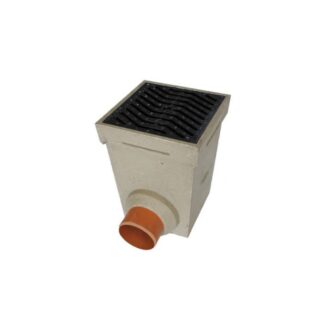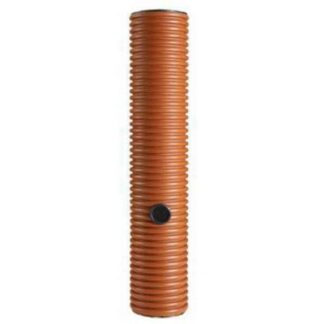Your cart is currently empty!
Stormwater well
A stormwater well is a chamber used to collect, drain, and sometimes pre-treat rainwater (stormwater) from ground surfaces, roofs, roads, and paved areas.
It is a central part of the stormwater system in both private properties and municipal water and sewer networks.
A stormwater well is installed in the ground and receives rainwater, drainage water, or meltwater from:
- street inlets
- ground grates
- downpipes
- drainage pipes
- surface runoff from yards and driveways
The well directs the water further to:
- a stormwater pipe
- infiltration
- a soakaway (rock pit)
- a detention or storage chamber
- a pond
- an open ditch
Stormwater wells are therefore used to prevent flooding, protect buildings, and control where water flows.
How Is a Stormwater Well Constructed?
A typical stormwater well consists of:
Well chamber
– plastic (PP/PE) or concrete
Grate or cover
– allows surface water in, often in load class B125 or C250
Sediment trap (silt trap)
– a sump where soil, sand, and debris settle
– prevents blockages in the pipe system
Inlets and outlets
– connections for drainage pipes, stormwater pipes, or downpipes
Common Types of Stormwater Wells
1. Downpipe well
Receives water directly from a downpipe.
2. Surface drainage well
Has a grate at ground level.
3. Street inlet (curb inlet / road gully)
Located in streets—collects water from the roadway.
4. Stormwater well with sediment trap
The standard type for residential properties.
5. Chamber for stormwater cassette/tank systems
Used in larger systems with infiltration modules or storage chambers.
-

Art.nr: dah133297p
Extension pipe with sleeve for 400/346mm well
179,40 € Add to cart -

Art.nr: tolSG25251711
Farm fountain HOME 27x27cm, B125
229,54 € Add to cart -

Art.nr: ahl19046694
Stormwater drain 400×2000 with an outlet 110mm, + cu...
225,40 € Add to cart -

Art.nr: ahl19046695
Stormwater drain 400×2000 with an outlet 160mm, + cu...
223,10 € Add to cart -

Art.nr: ahl19046697
Stormwater drain 400×3000 with an outlet 160mm, + cu...
328,44 € Add to cart -

Art.nr: 2358369
Well blank Quattro 453/400mm 2 meters
162,84 € Add to cart -

Art.nr: tol2733432600
Well pipe 400/350×6000 mm
211,14 € Add to cart

